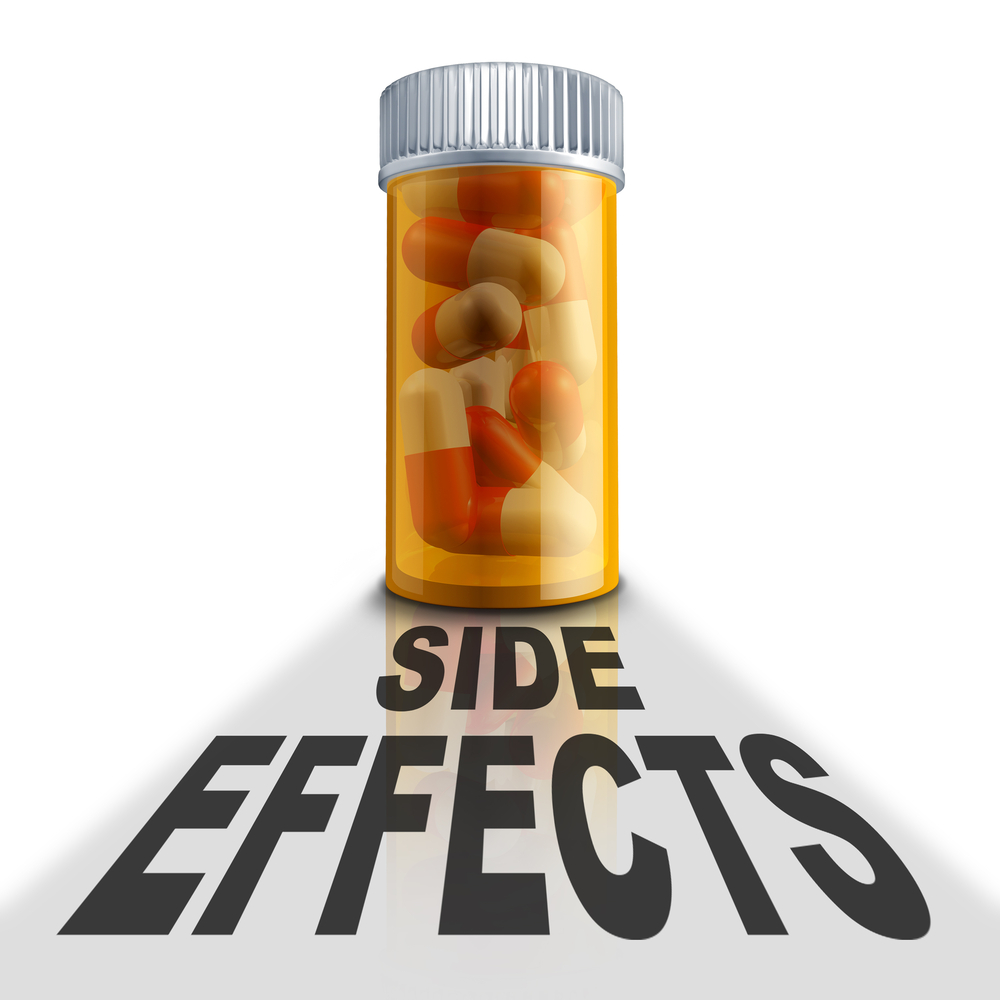
Do antidepressants trigger suicide? If there is a risk, does it outweigh the risk of harm from withdrawing effective treatment from other patients?
How can we trust the evidence when studies have shown under-reporting and methodological shortcomings in the evidence that we use to inform decisions?
Don’t despair, I’ll be your guide as we pick our way through the evidentiary minefield.
Antidepressants and suicide: why such contradictory findings?
As suicide is a rare event, it is hard to study in prospective trials. Many of the previous studies have used observational study designs, often recruiting participants retrospectively from clinical databases. It’s hard to combine the findings of such studies, because they usually look at different things:
- different sample populations (adults vs young people; severity of diagnosis),
- different comparisons (treatment combinations, with and without untreated controls), and
- different outcomes (measurement, classification and time frame).
Further, there is a risk of attrition bias, with patients experiencing adverse effects withdrawing from trials. Database studies may have incomplete, inconsistent or inaccurate information and it is harder to explore the impact of attrition than it is in prospective trials.
We’ll come back to the outcomes in a minute. However, these factors on their own may account for the apparently contradictory findings across studies of suicide in antidepressant use in general.

It is hard to study rare events in prospective trials. In observational studies, there is a greater risk of bias. Is this why we are confused about antidepressants?
What is the risk of suicide?
To form a balanced judgement, it’s important to know the baseline risk. Coupland et al (2015) reported that the suicide rate was 198 out of 209,476 database participants on antidepressants (0.09%), over 5 years. There were 5,243 cases of self-harm (2.5%).
Valuck et al (2015) did not find significantly higher suicide risk for antidepressants when compared with untreated patients, nor did they find any significant differences between types of antidepressant.
What are the risks of NOT treating with antidepressants?
Systematic reviews of antidepressants in adults have found beneficial effects overall on depressive symptoms (Cipriani et al, 2018) and suicidality (Näslund et al, 2017; see also: Dutta & McLaughlin, 2018).
This is consistent with Sharma et al, who went beyond published studies and databases to access the clinical study reports from trials of SSRIs and SNRIs. These reports contain much more detail about patient outcomes and study methods than the published report. They found that, despite under-reporting of adverse events in published studies, SSRIs, overall, reduced suicidality for adults aged 25 and over.

Systematic reviews of antidepressants have found beneficial effects overall on depressive symptoms and suicidality in adults and in children.
Average measures can be misleading
Right. Back to the outcomes. In any treatment cohort, some patients might have a good outcome from a treatment whilst others suffer a harmful one. Looking at an “average” score for this group will conceal this important fact. In the reviews cited above, it could be that an early risk of suicide has been balanced out by benefits for other patients over a longer time period.
Specifically, the use of patient-exposure-years as an outcome measure may lead us to under-estimate short-term harmful effects. Most suicide attempts occur within the first 3-4 weeks of treatment, so factoring in further exposure time to the outcome measure only serves to reduce its sensitivity.
So, here’s the chink of light. The Food and Drug Administration (FDA) recommends the reporting of event rates (that is, the number of patients experiencing an outcome at a given point in time) rather than symptom scores. The remainder of this blog considers a paper by Hengartner and Plöderl (2019) that applies this new approach retrospectively to previously published data from a systematic review (Khan et al, 2018).

Average measures of the effects a treatment may obscure important outliers, rare events or an uneven distribution of benefits and harms.
Methods
This paper (Hengartner and Plöderl, 2019) reanalysed data from a previous review (Khan et al, 2018), using event rates as the outcome measure, as recommended by the FDA.
Data was from integrated FDA safety summaries from all phase II and III trials in adults with major depression using sertraline, paroxetine, venlafaxine, nefazodone, mirtazapine, venlafaxine ER, citalopram, escitalopram, duloxetine, desvenlafaxine, trazodone ER, vilazodone, levomilnacipram, or vortioxetine.
Results
Data were included from 41,861 patients across 14 different FDA drug approval programmes from 1991 to 2013. The odds of suicide were 2.83 times (95% CI 1.13 to 9.67) higher for the antidepressant group than placebo.
| Outcome | Placebo (N=10,080) |
Antidepressant (N=31,781) |
Absolute Risk Difference (95% CI) |
Number Needed to Harm (95% CI) |
| Suicide | 4 (0.040%) |
37 (0.116%) |
0.077% (0.016% to 0.137%) |
1,303 (730 to 6,250) |
| Suicide attempts | 28 (0.300%) |
206 (0.713%) |
0.413% (0.265% to 0.561%) |
242 (178 to 377) |
The absolute risk of suicide in the placebo group was 0.04%, compared with 0.116% in patients on antidepressants. This increase in absolute risk translates to one additional suicide for every 1,303 (95% CI: 730 to 6,250) patients treated.

The absolute risk increase of suicide for antidepressants was 0.077%, one in every 1,303 patients. How can we help people balance this risk against the probability of relief from depressive symptoms?
Strengths and limitations
The review directly compares antidepressants and placebo using data from prospective randomised trials:
- The use of FDA reports reduces the risk of sponsor bias and reporting bias
- The low event rates make for a high risk of a type 1 error, and sensitivity to any kind of bias, particularly observer or reporting biases. Confidence interval calculations are less reliable at extremely low event rates
- Some data on suicide attempts was missing or incomplete. The data came from different studies at different stages
- The authors did not explore heterogeneity across drug types. However, the raw data in all instances favoured placebo over antidepressant treatment in respect of both suicide and suicide risk
- Older studies showed consistently higher event rates, suggesting there may be a systematic bias over time due to differences in the drug treatments
- This analysis may over-estimate the adverse effects of antidepressants: other analyses of the same data, using a range of statistical analyses, resulted in lower adverse effects, most of which crossed the “line of no difference” (Hayes et al, 2019)
- The fact that observations based on event rates contradict those based on symptom scores may be bad news for the reliability of those symptom scores.

This analysis by Hengartner and Plöderl may over-estimate the adverse effects of antidepressants.
Conclusion
Serious problem. There is strong evidence here that antidepressant treatment may trigger suicide in adults with depression. The use of patient-exposure-years as an outcome may have masked this short-term effect in some previous studies.
This risk needs to be balanced against the risks of withdrawing or withholding treatment. Antidepressants are effective for reducing depressive symptoms overall. The reduction in antidepressant use since the introduction of warnings has not been accompanied by a reduction in suicide, although it’s early days.
We should also be mindful that there remains uncertainty about this conclusion, given the low event rates. These concerns are more fully explored by Hayes et al (2019).

Everyone needs to know about this important new finding about increased risk of suicide with antidepressants. The data was already there; why did it take so long?
Implications for practice
- This evidence provides further clarification on the size of the risk of suicide when starting antidepressant treatment
- Patients, parents, carers and professionals need to be aware of this small increased risk
- Can (Is) the risk be (being) ameliorated by careful monitoring in the early weeks of treatment?
Implications for future research
- Careful observational studies of suicide, treatment choices, and the effects of withdrawing antidepressant treatment across all health services
- Please, please, please (wherever possible) use objective, dichotomous outcome measures.
Conflict of interest
None.
Links
Primary paper
Hengartner M, Plöderl M. (2019). Newer-Generation Antidepressants and Suicide Risk in Randomized Controlled Trials: A Re-Analysis of the FDA Database. Psychother Psychosom 2019;88:247–248. DOI: 10.1159/000501215
Related blogs
Huda S. (2016) https://www.nationalelfservice.net/treatment/antidepressants/antidepressants-benefits-and-harms-in-children-and-adults/
Dutta R & McLaughlin P. (2018) SSRIs and suicidality: effects of SSRIs on rating-scale-assessed suicidality in adults with depression.
Other references
Coupland C, Hill T, Morriss R et al. (2015) Antidepressant use and risk of suicide and attempted suicide or self harm in people aged 20 to 64: cohort study using a primary care database. BMJ. 2015 Feb 18;350:h517. doi: 10.1136/bmj.h517.
Hayes J, F, Lewis G, Lewis G. (2019) Newer-Generation Antidepressants and Suicide Risk. Psychother Psychosom 2019. doi: 10.1159/000502295
Hetrick SE, McKenzie JE, Cox GR, Simmons MB, Merry SN. (2012) Newer generation antidepressants for depressive disorders in children and adolescents. Cochrane Database of Systematic Reviews 2012, Issue 11. Art. No.: CD004851. DOI: 10.1002/14651858.CD004851.pub3.
Khan A, Fahl Mar K, Gokul S, Brown WA. (2018) Decreased suicide rates in recent antidepressant clinical trials. Psychopharmacology (Berl). 2018 May;235(5):1455–62
Näslund J, Hieronymus F, Lisinski A, Nilsson S, Eriksson E. (2018) Effects of selective serotonin reuptake inhibitors on rating-scale-assessed suicidality in adults with depression. The British Journal of Psychiatry (2017) 0, 1–7. doi: 10.1192/bjp.2017.24
Sharma T, Guski LS, Freund N, Gøtzsche PC. (2016) Suicidality and aggression during antidepressant treatment: systematic review and meta-analyses based on clinical study reports. BMJ 2016;352:i65
Valuck, R., Libby, A., Anderson, H., Allen, R., Strombom, I., Marangell, L., & Perahia, D. (2016). Comparison of antidepressant classes and the risk and time course of suicide attempts in adults: Propensity matched, retrospective cohort study. British Journal of Psychiatry, 208(3), 271-279. doi:10.1192/bjp.bp.114.150839
Image credits
- Restart Project https://www.flickr.com/photos/96189004@N04/
- Philip Taylor https://www.flickr.com/photos/22764763@N00/2040662391
- Alexande Dulaunoy https://www.flickr.com/photos/31797858@N00/3535842122
- Joshua Byrd https://www.flickr.com/photos/74657501@N00/2350446059

Thank you for this balanced evaluation. We address further limitations of this dataset, the reliability of and accuracy of the data, and the impact of different analytic methods on the results in our reply to Hayes et al. The paper is freely available ehre and I hope that it helps to further explore this complicated issue:
https://www.karger.com/Article/Pdf/502485
[…] for the Mental Elf, Douglas Badenoch agreed with this conclusion. He began his review of the study by acknowledging the difficulty of studying suicide in […]